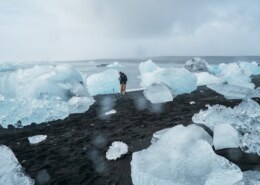Addressing climate change is difficult due to limited resources and a growing population. However, a combination of strategies can help mitigate the impact and adapt to changing conditions. Here are some key approaches: 1. Mitigation Strategies Transitioning to Renewable Energy: Shifting from fossilRead more
Addressing climate change is difficult due to limited resources and a growing population. However, a combination of strategies can help mitigate the impact and adapt to changing conditions. Here are some key approaches:
1. Mitigation Strategies
Transitioning to Renewable Energy: Shifting from fossil fuels to renewable energy sources like solar, wind, and hydroelectric power.
Improving Energy Efficiency: Enhancing energy efficiency in buildings, transportation, and industry to reduce overall energy consumption.
Reforestation and Afforestation: Planting trees and restoring forests to absorb CO2 from the atmosphere.
2. Adaptation Measures
Adaptation involves making adjustments to social, economic, and environmental practices to reduce vulnerability to the impacts of climate change.
Sustainable Agriculture: Adopting practices that improve soil health, conserve water, and enhance crop resilience to climate variations.
Water Management: Developing systems to manage water resources efficiently, including the use of desalination, water recycling, and conservation measures.
Community Preparedness: Educating and preparing communities to respond to climate-related emergencies.
3. Population and Resource Management
Addressing population growth and resource consumption involves promoting sustainable development, improving education and healthcare, and encouraging responsible consumption patterns.



Main cause of climate changes is HUMAN. Yes, you read it right.Humans are responsible for virtually all globally heating over the last 200 years. Earlier climate change was due to natural shifts like change in sun's activity or large volcanic eruptions but these natural shifts did not affect the EarRead more
Main cause of climate changes is HUMAN. Yes, you read it right.Humans are responsible for virtually all globally heating over the last 200 years.
Earlier climate change was due to natural shifts like change in sun’s activity or large volcanic eruptions but these natural shifts did not affect the Earth on a longer run.
But,
Since 1800s , major reason of the climate change is human activities as humans are the reason for producing abnormal levels of greenhouse gases in the air.
Greenhouse gasses are the gases which are the biggest contributor in the climate change across the globe. Although, in limited amount they are beneficial for us as they help the earth to remain warm by trapping the sunlight when it reflects back from the earth surface, but as their is a saying that excessiveness of everything is harmful and it fits here too. Greenhouse gases like carbon dioxide and methane are harming the earth.
Burning of fossil fuels is the largest contributor to the greenhouse emissions.
One can contribute a lot towards it at the ground level. Following are the actions we can take:-
•Reduce, reuse, repair and recycle :- The items we buy cause carbon emissions at each point in production, from the extraction of raw materials to manufacturing and transporting goods to market. To protect our climate, buy fewer things, shop second hand, repair what you can, and recycle.
•Save energy at home :- We should use energy-efficient electric appliances, switching to LED light bulbs, washing your laundry with cold water, or hanging things to dry instead of using a dryer
•Walk, cycle or take public transport:- Vehicles burn diesel or petrol emitting greenhouse gases. Use of cycles or preferring walking not only reduce greenhouse gases but also help to improve our health and fitness
•Eat more vegetables :- Eating more fruits and vegetables, and less meat and diary, can significantly lower your environmental impact.
•Use electric vehicles:- Electric cars help reduce air pollution and cause significantly fewer greenhouse gas emissions than petrol kr diesel-powered vehicles.
See less